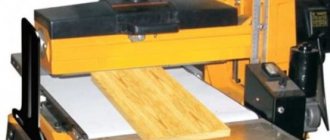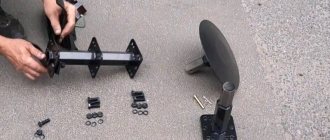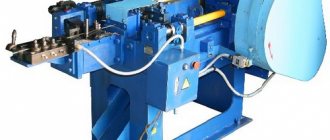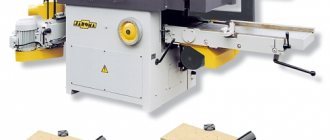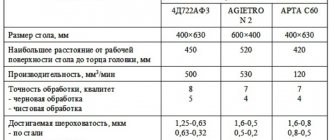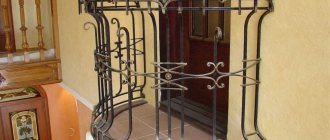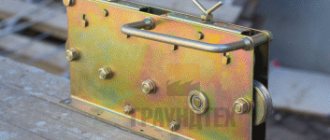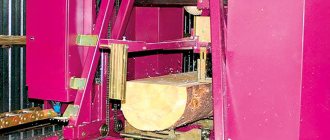Types of adjustable machines
To carry out one-way or two-way wiring, separate types of wiring devices are produced.
Also, adjustable machines are designed to work in semi-automatic or step-by-step mode.
- Automatic adjusting machine for band saws - this machine eliminates the need to install each saw tooth under the device. Automatic routing machines allow you to obtain perfectly accurate routing, while significantly saving time. This will be evidenced by the smooth mark left by the sawmill on the surface of the product.
- Semi-automatic adjustable machine
- Double-sided adjustable machine
An adjusting machine for band saws is necessary for every woodworking industry.
buy an adjusting machine for band saws at a factory price in our online store.
The SAWS UNITED catalog contains adjustable machines for wood band saws. Such equipment ensures quick setting of saw teeth to guarantee long, trouble-free operation. If the setting is done incorrectly, this will lead to rapid wear of the teeth, after which the saw will completely fail. Our company offers to order semi-automatic and automatic adjusting machines for band saws to prevent premature wear of the equipment.
Setting up band saws
The process of setting is considered to be an operation associated with bending the saw teeth in different directions in order to reduce the friction of the saw band on the side surfaces of the cut and prevent it from being pinched.
For free movement of the blade in wood, it is necessary to ensure a cutting width that exceeds the thickness of the blade by at least 30-60%. Wiring is divided into several types, and they do not yet have established names, since saw manufacturers call them differently.
The standard setting is characterized by alternating bending of the teeth on different sides.
Standard wiring diagram
When stripping, the teeth of the saw blade are divided into three, two of which are bent in different directions, and the third remains in place.
Stripping wiring diagram
It is mainly used when working with hard wood. The trapezoidal shape of every third tooth remaining in the center of the saw sets the direction of the entire saw blade.
The most difficult to perform is the wavy setting, since each subsequent tooth in a half-wave is bent by an increasingly increasing amount.
Wavy wiring diagram
With any type of setting, the tooth is not bent from the base, but with an indentation from it by 33-67% of the height of the tooth. Despite the fact that each manufacturer dictates its own requirements regarding indicators related to divorce, all of them do not go beyond 0.3-0.7 mm.
It is generally accepted to cut trees with soft wood with band saws that have a large gap, and with hard wood - a small gap. But in any case, the spread should be such that sawing occurs without the formation of a cut wedge in the center.
When set, all teeth must be bent by the same amount with a permissible error of up to 0.1 mm. If the setting is not the same, the saw will be pulled in the direction of the larger setting.
Basic selection options
The online store offers a wide selection of equipment, all models are offered at affordable prices. The adjusting machine for band saws is selected taking into account the following operating parameters:
- Manufacturing company. Our catalog presents products of the popular brands Taiga, Altai-3, Divors, as well as products from foreign manufacturers. Such equipment has proven itself well in woodworking enterprises.
- Maximum saw width. Familiarize yourself with the characteristics of each model: the larger the permissible range, the wider the operating capabilities of the equipment.
- Operating mode. Manual and automatic equipment differ in design, operating speed and cost.
- Design features. Some models are suitable for simultaneously moving two teeth apart, this significantly speeds up the work.
An automatic adjusting machine for band saws will work flawlessly for a long time and will allow you to keep your tools in excellent condition. Such equipment is easy to use and easy to configure; it will be easy to work with.
Device for setting teeth
To cut teeth with a pitch of 0.5 mm, the ratchet wheel is replaced. The replaceable matrix 11 is attached to the body 1 with screws 12 and installed using a stop 13. When installing a new tape, the upper roller is moved away from the lower one using a special lever. With 116 strokes/min of the slider and a tooth pitch of 6 mm, the device cuts teeth on a 41.76 m long strip in 1 hour. Correct tooth spacing is of great importance for the productive operation of band saws. To set the teeth of band saws, a device is used, the operating diagram of which is presented in Fig. 14 [8]. The device is driven by the rotation of the flywheel 1, mounted on the crankshaft 2. On the latter, ring-bearings are freely located, in which curved levers 3 and 4 are attached to the threads. When the flywheel rotates, they receive a reciprocating motion. At the end of lever 3 there is a square with a freely hanging pawl 5. When lever 3 moves to the right, the pawl rests on the tooth of the saw blade 6. With one turn of the flywheel, the saw moves two teeth. The pawl and the square are hinged, so when the lever moves back, the pawl rises and slides along the teeth of the saw. Levers 4 are elements of the gear setting mechanism (the second lever is located on the back side of the housing). Levers 4 are pivotally connected to the crank axis of the cam 7. The levers return to their original position by springs 8. When the flywheel rotates, the levers 4 rotate the cams 7, which push the punches 9 towards each other. Two adjacent saw teeth bend in different directions (move apart). Springs 8 return cams 7 and punches 9 to their original position. The angle of the teeth is adjusted with nuts 10 and by deepening the threaded end of the levers into the rings on the crankshaft. The tooth set angle is 15° in both directions. The amount of feed of the pawl 5 is adjusted by nut 11. The mechanism for installing and securing the band saw has two plates that make up the body of the device, and a wedge 12 located between them. The wedge moves in the body, and the teeth of the set saw always protrude above the body by a certain amount. At the Volgograd Tractor Plant they use a device for setting the teeth of band saws. The device operates by hand drive and consists of two disks with shoulders on which a band saw is mounted. One of the disks is movable to tension the saw. The adjustment is carried out by two cams using a pawl, a lever with a roller, copiers, a handle and levers. An automatic machine is used for cutting and setting the teeth of band saws [54]. Teeth cutting is done on a steel strip of any length, which is then cut into measuring tapes. When refurbishment of band saws, the teeth are cut again. The machine can be installed on a separate frame, table or workbench; its overall dimensions are 380x320x250 mm, weight 16 kg; it is equipped with an electric motor with a power of 0.37 kW, with a shaft rotation speed of 1400 rpm. On the plate 1 of the machine (15) two brackets 2 and a support bar 3 are installed. Supports 4 are attached to one bracket, in which a worm 5 carrying ball bearings and a driven flywheel pulley 6 are installed. On the other bracket is mounted the eccentric 7 of the pusher 8 of the feed mechanism and gear wheel 9. The feeding mechanism consists of three supports 10-12, on which are placed a worm pair 13 and 14, a drive roller 15 for feeding the tape blank, a pressure roller 16, a pressure roller lever 17 and a screw 18 that regulates the degree of pressing of the pressure roller. To move the workpiece per saw step, a replaceable ratchet 19 is mounted on the worm 5. A drive gear 21 is installed on the shaft 20, which meshes with the eccentric gear of the feed mechanism pusher, cam disks 22-25, intermediate bushings 26 and 27, and a worm wheel 28. A combination stamp (16) is installed on the support bar 3; one of the stamps is used for cutting out teeth, and the other for setting teeth; the stamps are mounted on plate 1 between two posts 2 and 3. On the base of plate 1, together with the die-cutting die matrix, two strips 4 and 5 are installed. Between the die-cutting die matrix and the guide strip 6 there is a clamping device strip 7. The device is kinematically connected to the punch of the cutting die using two rollers 8 and 9 of guide bars 10 and 11, between which a spring 12 and a pushing head are inserted. A rubber ring 14 and a metal ring 15 are put on the bar 11, with which the tape is pressed while cutting the teeth. For lateral clamping of the tape, a clamping device is mounted in the hole of the strip 4. It consists of a retainer 16, a clamping bar 17 and a spring 18. The pushing head serves as a guide sleeve into which the spring 19 is inserted. The tape is secured with a nut 13. The nut 20 of the pushing head rests on the metal ring 15 of the rubber ring 14. To release the tape after cutting and moving It is placed on the new section by spring 12, which returns the clamping device to its original position. During operation, the pushing head of the punch slides along a bronze bushing 21, pressed into the bar of posts 2 and 3. Depending on the clamping force of the tape, it protrudes above the bar by one or another amount. The die for setting the teeth does not have a clamping device. Punch 22 is inserted at one end into the pushing head 23, and at the other into the bar 24. Its position is adjusted by a nut 25. A spring 27 is installed between the nut 25 and the guide sleeve 26. The pushing head of the punch slides along the guide sleeve 28, pressed into the bar 29. Combined die installed on the stove and covered with a casing. To thicken the teeth of band saws, the DIXA device (PNR) is used. The distance between the teeth undergoing thickening is 17 mm, the minimum tooth height is 9 mm, the maximum saw thickness is 3 mm. For lateral profiling, leveling and grinding of flattened teeth of band saws, the DHCA-20 machine (PNR) is used.
Order equipment via the Internet
The SAWS UNITED company offers to buy an inexpensive adjusting machine for band saws; all models of equipment are offered at a low cost. Check the performance specifications in the descriptions to find the solution that suits you.
The price of an adjusting machine for band saws depends on the design features and possibilities of use; our consultants will suggest a suitable solution. Provide your production facility with reliable equipment to keep your saws in working order. Call and place your order on favorable terms!
How to choose the right model
The choice of a suitable sharpening machine model is determined by the parameters of the existing band saw. It is necessary to consider equipment capable of processing such belts, which has the appropriate characteristics (tooth pitch, belt thickness, loop length, etc.). Finding the right machine for one band saw is easy.
A much more difficult task is to choose a model to service several saws of different sizes that have their own tooth profile. Sawmills or carpentry shops often use several saws for economical cutting of valuable logs and for clean cutting of thin plates with fine-toothed belts.
In such cases, you have to choose universal type equipment that can work with different tapes and allows quick changeover from one size to another. Experts recommend giving preference to domestic manufacturers who use stronger metal and produce machines with an extended service life.
